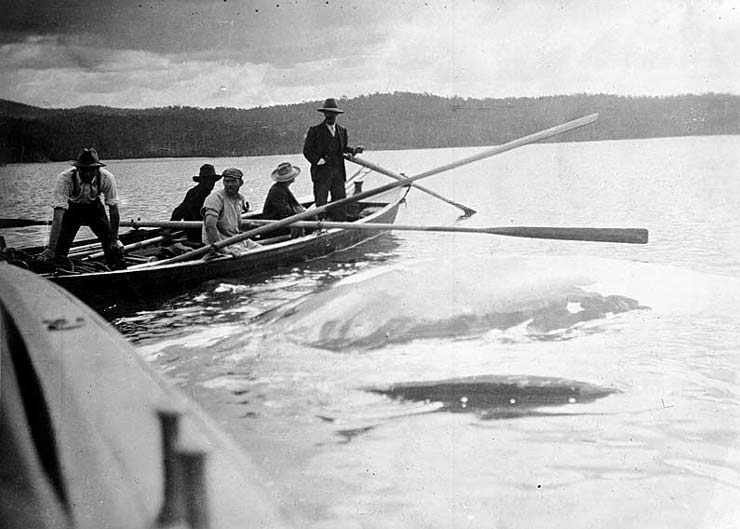 Twofold Bay whaling, early 20th century
Twofold Bay whaling, early 20th century
TLF ID R3043
This is a photograph made from a glass plate negative measuring 12.0 cm x 16.5 cm dating from between 1900 and 1922. It shows a whale hunt taking place in Twofold Bay on the south-eastern coast of New South Wales. There is a five-oared whaling boat visible, with the captain, George Davidson, standing aft (at the rear), holding the rudder. A killer whale is next to the boat. Also visible is a section of another boat carrying Charles Eden Wellings, the photographer.
